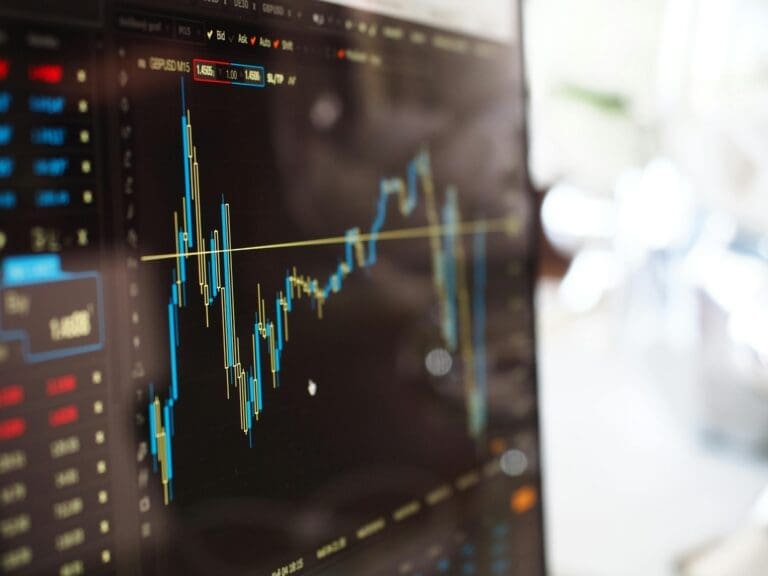The foreign exchange (forex) market is often described as the beating heart of global finance. Every second of every day, currencies are bought and sold, making it the largest and most liquid market in the world. According to some experts, the daily forex trading volume averages $7.5 trillion—a figure that eclipses the combined GDP of several countries.
With such capital in motion, you don’t expect the industry to afford inefficiency, lagging systems or outdated methods. And that’s where tech innovations come into play, transforming forex trading from something that was once the exclusive domain of banks and financial institutions into a more accessible and efficient market.
If you were to rewind a few decades, a lot of things happening today were only far-fetched dreams. For instance, you couldn’t place trades using your phone because there wasn’t sufficient mobile technology to facilitate that. And when it comes to information dissemination, processes were often slow. But come to 2025, real-time data flows and mobile trading have become the new norm. All this is possible because of tech advances, and staying around will help you uncover more details.
Maintaining relevance amid increasing mobile phone usage
It’s no surprise that of the world’s internet population, over 96% often use mobile phones to go online. These devices are more convenient, allowing users to access almost every service from anywhere, anytime. So, whether you’re on the go or at home, you can access markets without having to open your PC. It only gets challenging when users have to zoom or pinch websites to access services.
According to JDM Digital, such mobile-unfriendly experiences can be frustrating and cause over 60% of users to leave. Thankfully, the forex industry has become more trader-focused, opening up to responsive designs. With these designs, companies create websites that automatically adapt their layouts to look good and work well on any screen size. Flexible grids and responsive images ensure you won’t need to worry about frustrating website experiences when monitoring charts on your smartphone.
Exploding Topics claims that about nine in ten individuals have smartphones, so the popularity of responsive designs in this sector increases the likelihood of more people trading. This trend is also reflected in how investors engage with local markets. For example, share trading platforms South Africa are now designed with mobile-first features, ensuring that both seasoned traders and newcomers can access opportunities without being tied to a desktop.
Real-time data and advanced charting tools
Real-time data is one of the biggest game-changers in forex trading, especially now that successful engagement requires accurate knowledge about trading trends and economic indicators. Without the ability to sieve opportunities, you may end up making serious mistakes. Things change so fast in forex, making real-time data essential because it:
- Allows traders to react promptly to market shifts
- Reduces the lag between market events and traders’ responses
- Helps refine trading approaches, as traders can backtest strategies against live data
This is where integrating application programming interfaces (APIs) comes in handy. Partnering with reputable APIs allows traders to access extensive historical and real-time information that helps ensure more informed trading decisions. They are also an excellent way of developing customized applications that match specific trading styles.
Platforms with live streaming quotes, often down to the millisecond, have also transformed this industry. This is without forgetting advanced charting software, which improve visualization of data trends through candlestick charts, Bollinger Bands and Fibonacci retracements. Regardless of location, you can now monitor how the US dollar reacts to a Federal Reserve announcement in real time, with charts automatically adjusting to highlight volatility spikes. The need to wait hours to respond is eliminated as you can do so within seconds.
Tightening the security of interactions
According to a recent study by DemandSage, cyberattacks have increased globally by about 30%. This could even be more serious in forex, where over $7.5 trillion is traded daily. Of course, such a capital flow will attract security risks. That’s why the need for proper online security measures can never be overemphasized.
Just a slight mistake could negatively affect your brand perception and discourage traders from ever returning. Can you believe that, according to Privacy Compliance Hub, over four in ten users won’t return to a breached company? Modern-day internet users have become more security-conscious and only want to transact with secure platforms. In response to such preferences, organizations have been adopting infrastructures like two-factor authentication (2FA).
Interestingly, 2FA alone can prevent exposure to up to 99.9% of targeted attacks by simply requiring another verification form besides the normal password login. Other contemporary technologies, like blockchain, have also begun to make their mark. Blockchain offers immutable ledgers, reducing the chances of manipulation. For platforms seeking to improve trader participation, tightening security can be handy. Others have even gone the extra mile to experiment with blockchain-based settlement systems to reduce the time and cost of cross-border trades.
Looking at this industry, you will see perfectly how tech innovations can reshape an entire sector. Features like real-time data have made it possible for traders to access instant information, which is necessary for making informed trades. Others, like responsive platforms, allow seamless interactions even on devices with smaller screen sizes. When it comes to security, the industry has also been adjusting. It’s the reason you won’t miss features like two-factor authentication on most platforms. And as tech innovations provide more possibilities, the industry will continue to align, providing safer and more immersive user experiences.
